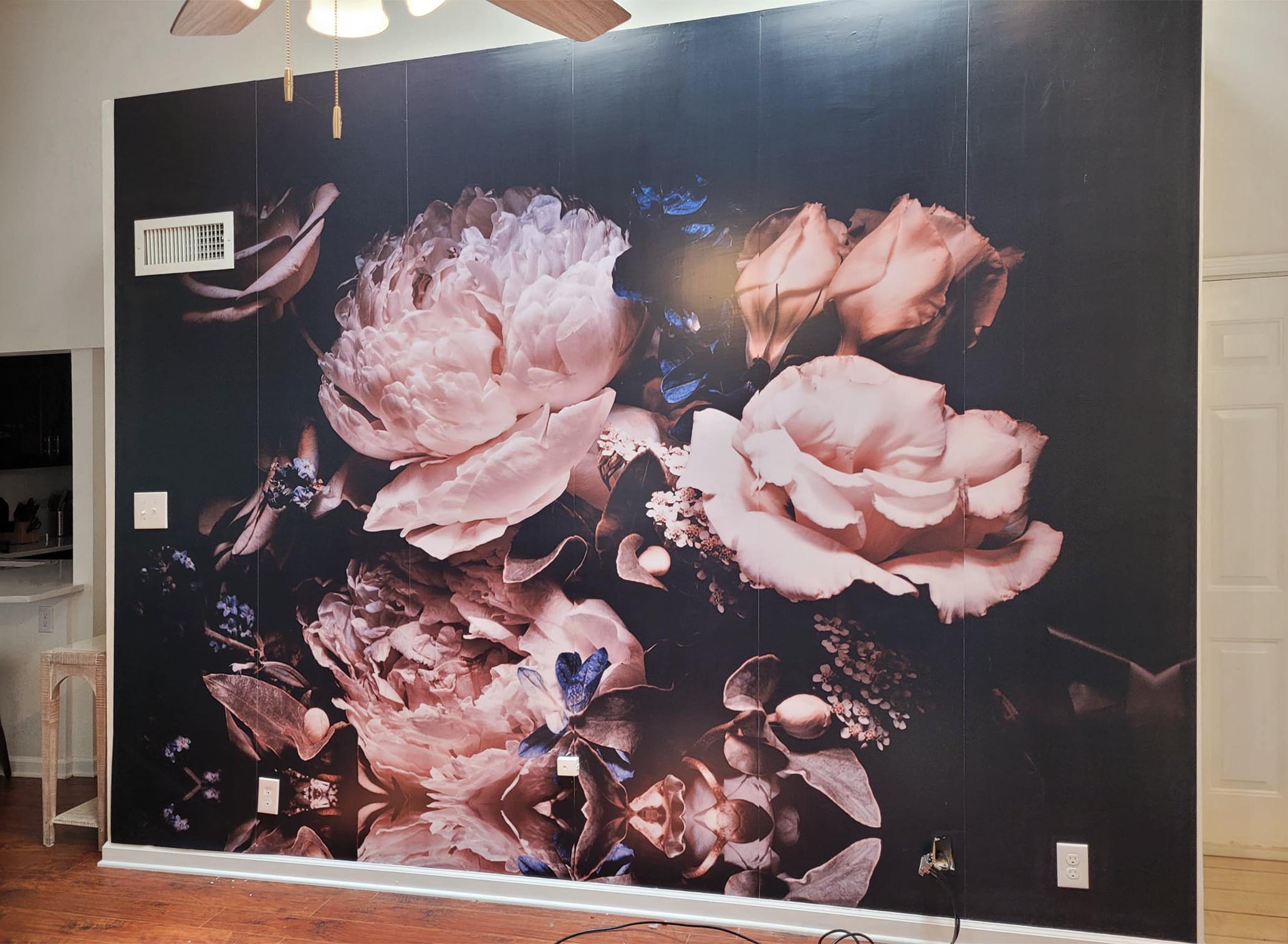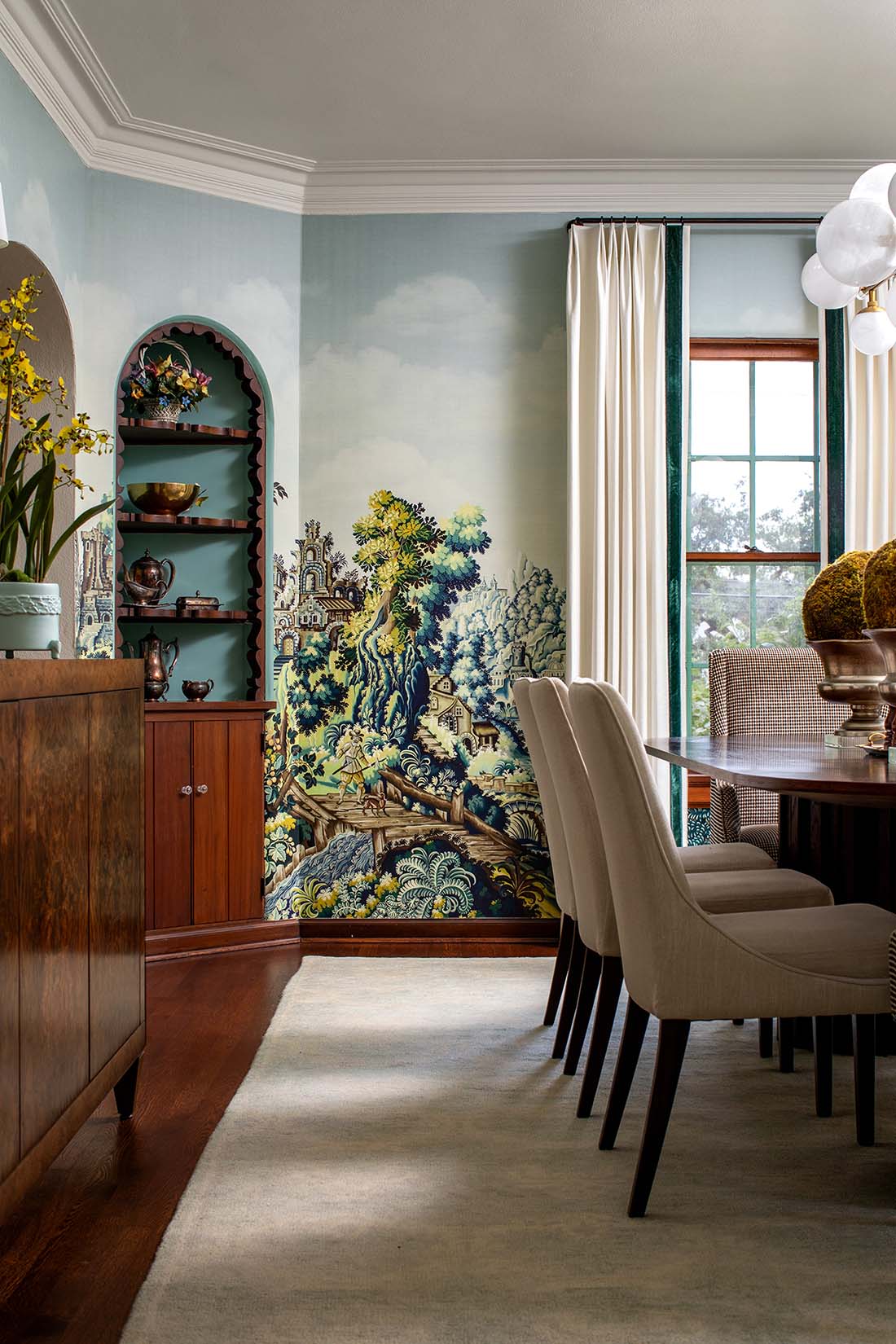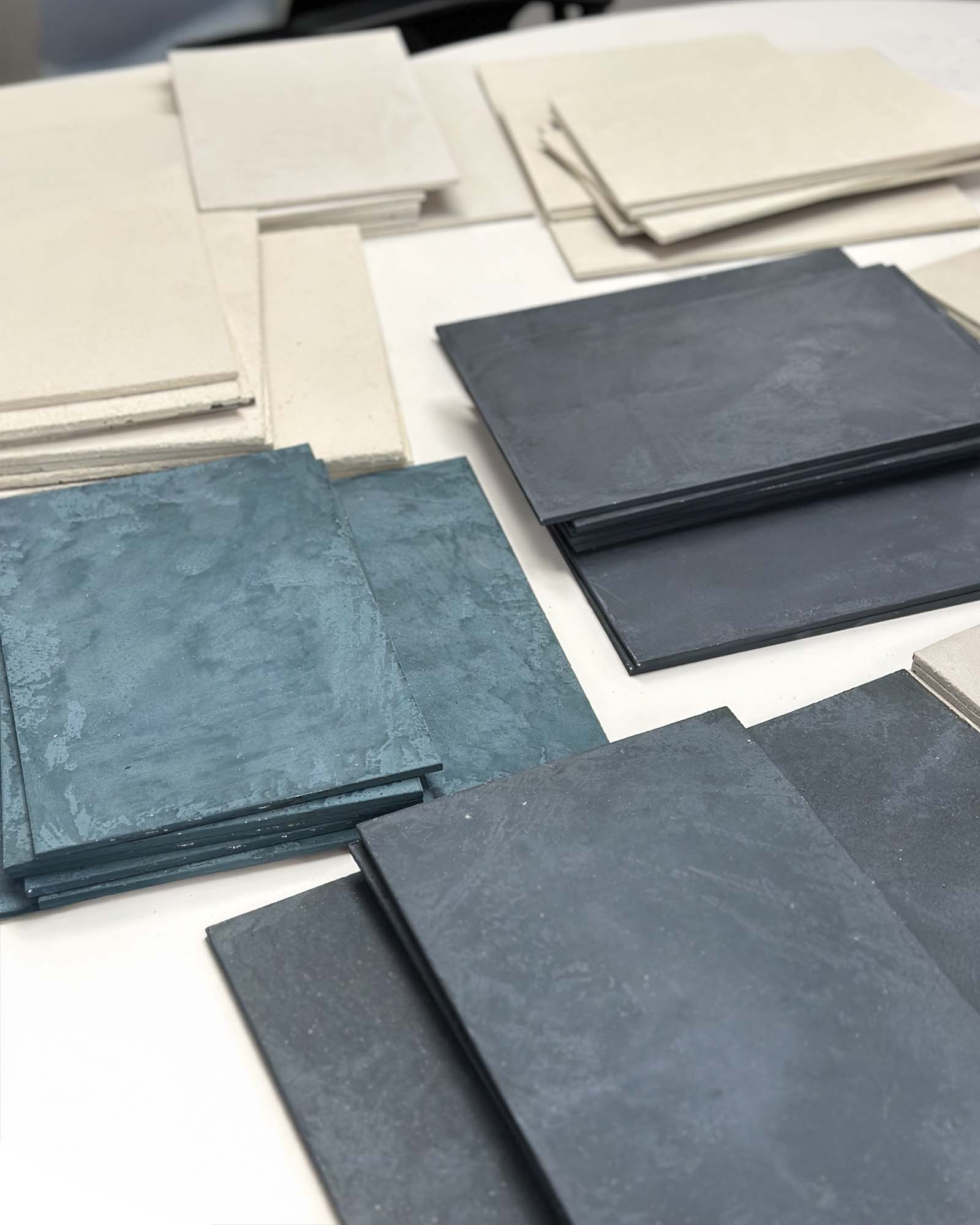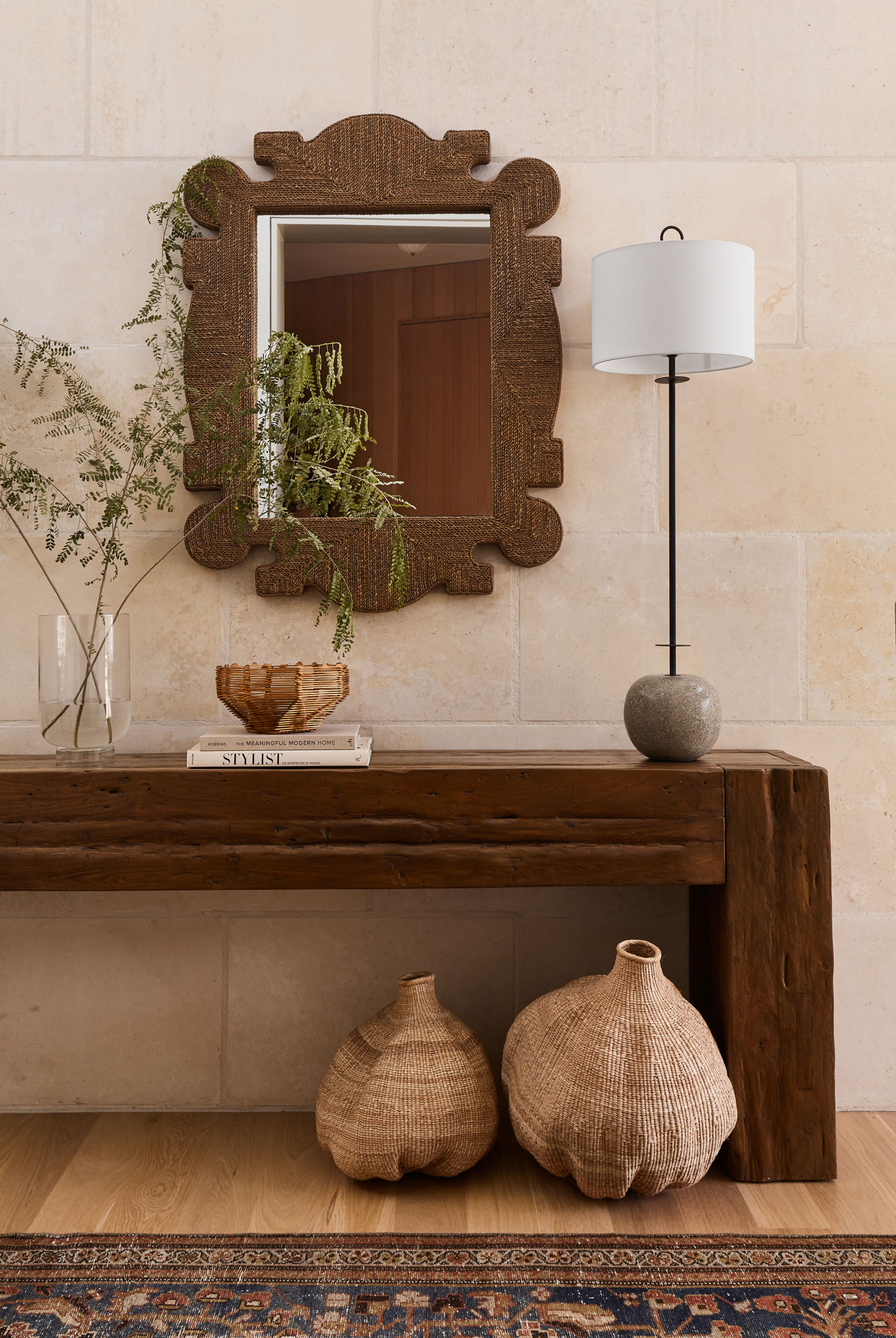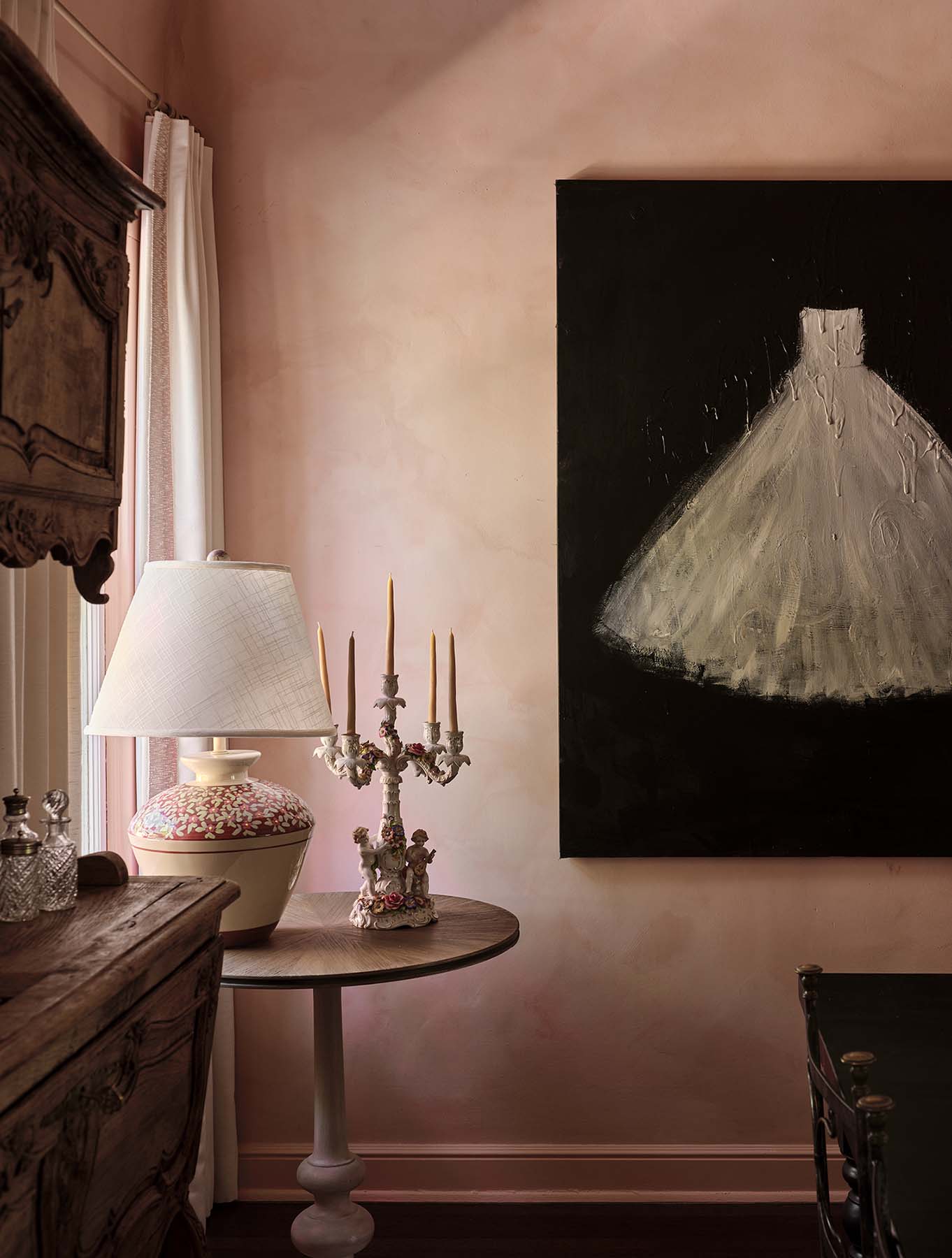If you want to put up a cute removable wallpaper because it sounds like a fun and easy project, there are some peel and stick wallpaper pros and cons you need to know about first, before you install. Knowing these potential challenges in advance can save you time and aggravation later!
First, let’s look at the advantages of peel and stick wallpaper. Removable wallpaper has its uses, no doubt about it.
Benefits of Peel and Stick Wallpaper – the Pros
If you know you’ll change your mind in a few years, removable wallpaper is perfect.

Paint already has the advantage of being easily changed at any time. Not so with traditional, pasted wallpapers, which usually require skilled professionals to install, and are typically more expensive (since they’re more durable and made of better materials).
But peel and stick wallpapers are like “fast fashion”. It takes the fear out of picking something that might be outdated in a few years. Your baby, or your tween, has grown up? Trends have changed? No problem! Take down the old removable wallpaper and put up a new one in its place. Or paint, if you prefer.
This is why people think of baby nurseries or kids’ rooms when they think of peel and stick wallpaper. It’s a perfect fit.

Removable wallpaper can be installed in places where you can’t make more substantial changes, such as apartments.
When we first demonstrated how to install peel and stick wallpaper, we were hanging it as a labor of love for a family member who lived in an apartment. For those who want to personalize a space but can’t make more permanent changes, a removable wallpaper that won’t damage the walls when it’s pulled down can save the day.
It costs less than traditional pasted wallpapers do.
Nearly every large, established wallpaper manufacturer now has a peel-and-stick division, and you’ll notice that those papers cost less than their same design in a pasted version. The papers are thinner, for starters, since a thicker or textured wallcoving like a grasscloth would be too heavy to stay up without paste. And independent artists can design and print their own versions now, and distribute them through marketplaces like Etsy, which is wonderful for the artistic community at large. But those wallpapers are often printed with less durable techniques by smaller artists or print houses, who don’t have the budget or the decades of experience that more established manufacturers do. Not a problem, as long as you know what you’re getting.

Removable wallpaper is considered a DIY product.
Ah, here’s where it gets tricky.
The very same aspects of peel and stick wallpapers that make it easily accessible for most DIYers are what can also cause grief later on. All kinds of reels on Instagram make it look so easy. Heck, we’ve even made our own series of how-to videos.
But most of the reels and videos out there presume that you’re sticking your paper up on an already-smooth surface.

This is probably the case if you live in the eastern half of the country, or outside the US, where smooth walls are the norm. But if you live in suburbia in the western half of the US, your home probably has textured walls. And unless you’re ready to “float” those walls with joint compound to make them perfectly smooth before you hang anything up, you’ll experience the most common of peel and stick wallpaper problems – wallpaper that just won’t stick. The DIY aspect of peel-and-stick wallpaper makes it a temptation to do things quick, keep it simple, and just slap the paper up onto your walls as-is. Which, actually, makes its DIY nature a negative, not a positive.
Peel and Stick Wallpaper Issues – the Cons
Peel and stick wallpaper is designed to be temporary.
This is one of the main peel and stick wallpaper issues, ironically. Given enough time, the intentionally-weak adhesive on the back of your cute wallpaper will lose its grip and start peeling off.
Yes, we realize that its temporary nature also is an advantage to peel and stick. But since it’s not designed to be permanent (quite the opposite), it’s likely to loosen over time.
Think of removable wallpaper as being like shelf paper, or to those peel-and-stick paint color samples you can order from places like Samplize. That’s basically what you’re working with.
You can help increase the adhesion – and therefore the longevity – of your removable wallpaper by doing the right prep on your walls first. But then, this may not be a simple two-hour weekend project!

The work required to prepare your walls can be significant – especially if you’re dealing with texture.
Unless your walls are already completely smooth to the touch, you must refloat the walls first!

Otherwise, you’ll see all the bumps and roughness of the texture underneath the paper, and it could ruin the look. Of all the possible peel and stick wallpaper problems, this is probably the most common.
If you have textured walls, you must get them completely smooth before installing any kind of wallpaper, especially removable paper!
This is one of those peel and stick wallpaper issues that you probably won’t see on many of the how-to videos out there. Removable wallpaper is thinner than usual already, and often printed onto a more shiny, plasticized surface. This means that if there are dark colors in your wallpaper, any light shining on them from the window or your lighting will shine on the underlying texture and give your wall a “goose bumps” effect.
Here’s a phone snapshot with absolutely no staging done, but it illustrates the point.

Those visible bumps completely detract from the overall effect of the wall, and can’t help but draw the eye.
This close-up shot shows the edge of one roll of the wallpaper, with the underlying orange peel next to it.

Remember, if you’re installing temporary wallpaper because you’re not allowed to make more permanent changes, then you probably can’t float your walls to make them smooth anyway. But installing over texture affects more than just the visuals.
Notice the hairline gaps, visible as white lines between the rolls on this wallpapered wall? That brings us to the second issue when installing over texture: poor adhesion.
Orange peel texture on walls is made up of tiny mounds of joint compound sprayed onto your walls, then primed and painted.
So here’s what happens when you install a peel and stick wallpaper over a textured wall. As you hold your wallpaper up and squeegee it in place, you’re spreading the paper over the “peaks” of your wall’s texture, and not the valleys, as it were. Because there is no adhesion down into the texture’s dips and valleys, the paper only sticks to the tiny peaks of texture on top. No amount of pushing the paper down onto your wall will get it to stick as well as it would if the walls were smooth in the first place.
This means that, over time, the paper starts to pull away from the wall. And those tiny hairline gaps start to show between the rolls or panels.
This can be a problem even if your walls don’t have a heavy, bumpy texture. In the snapshot below, the feature wall was loosely floated semi-smooth as part of a DIY weekend project. (Kinda fun that the same paper was installed – makes a great comparison.) Even without obvious bumps, the poorly-sanded areas are visible where the light shines on the paper at the top. And over time, the paper still loosened away from the wall, leaving visible gaps between the mural’s panels.

These are the same reasons we don’t advise to DIY painting kitchen cabinets. It’s not that the painting is always difficult (although, when it comes to painting cabinets or woodwork and getting a silky-smooth finish, it actually is). It’s that the prep always is more extensive and takes way longer than most homeowners want to tackle on their own. And without the right prep, the whole project falls apart.
If you have texture on your walls, we can’t say it enough: smooth out your walls first! Hire a professional if you have to. Refloat your walls, sand them well, prime them, and give them a couple of weeks to thoroughly dry (more than just drying to the touch). Then you’ll be ready to install.

Peel and stick wallpaper is usually not as matte as regular wallpapers. Its shininess might be a problem.
This might not bother you. Plenty of gorgeous papers look just fine with a bit of extra sheen.
But sometimes a shinier wallpaper can have a “plasticky” look to it that isn’t appealing. This is entirely a matter of taste, but I can almost always tell peel and stick wallpaper at a glance, just from the sheen alone. If you prefer a more elegant, matte look, or you’re looking for a more natural, organic effect, go with traditional wallpaper.

Overall, removable wallpaper has its uses! But this is one of those “caveat emptor” situations. Know what you’re getting. Order an actual sample of your wallpaper so you can see and feel it in your space, before you invest in the entire purchase. And don’t expect your installation to look as good as the inspiration reel unless you’ve done the right amount of prep to your walls first.
Summary: Peel and Stick Wallpaper Pros and Cons
The pros:
- It lets you change your mind as trends change or your kids grow, without you feeling bad about the investment.
- You can use it to personalize your space in places that won’t allow more permanent changes, like apartments.
- It costs less than traditional wallpapers do, especially if you do all the labor yourself.
- It’s marketed as a DIY product, making it feel more accessible to the average homeowner.
The cons:
- Removable wallpaper is designed to be temporary. Even in perfect conditions, it won’t stay up that long.
- If your walls are textured, you have a lot of prep to do. If you don’t smooth out your walls first, you’re putting temporary wallpaper up onto a rough, uneven surface. You’ll see every little imperfection below the wallpaper, and it won’t adhere well on a textured surface.
- Peel and stick wallpaper is usually printed on thinner, more plasticized materials, so they won’t have the soft matte look of more traditional wallpapers.

If peel and stick wallpaper is right for you, it can be a great solution for temporary spaces, ever-changing trends, or growing kids. And it can look surprisingly sophisticated when done right! Just be aware of any peel and stick wallpaper pros and cons upfront, so you can make your own project a beautiful success.

